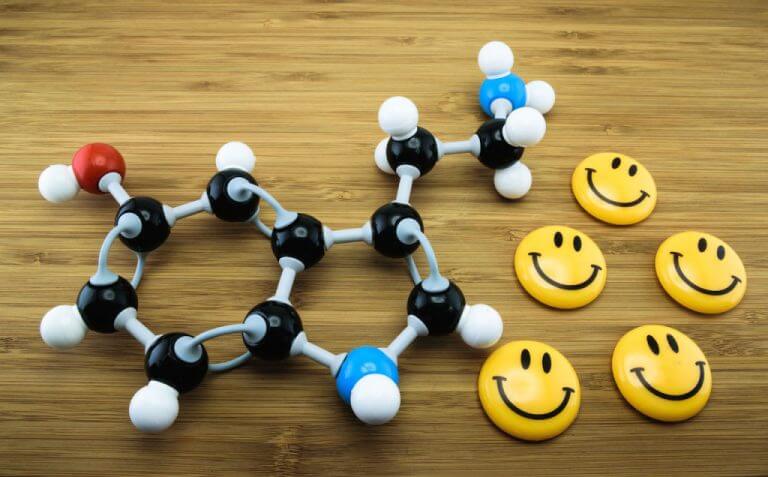What You Should Know about Prozac for Depression

Prozac is a drug whose active substance is fluoxetine. It’s a common antidepressant. In fact, it was a revolutionary drug to treat depression since it was the first one that general doctors prescribed.
An American pharmaceutical company, Lilly, launched it in 1988. Then, it began selling in other countries shortly after. Since then, doctors are very confident in its effectiveness and safety since many people tolerate it well. The side effects, which we will talk about later, are less aggressive than previously used drugs.
Prozac was just as effective as existing drugs, but was much safer. Therefore, primary care doctors began prescribing it.
Interesting facts about taking Prozac for depression
As we know, this medicine came out in 1988. Then, eight years later, companies started making generic versions, as well as pills to take orally. By taking pills orally, it made it a lot easier to take Prozac for depression. Before the patent expired in 1999, Prozac sales reached over 30 million dollars. However, when the generic version reached the market, this figure dropped to about $700,000.
The factories that make the active ingredient of Prozac, fluoxetine, are in Puerto Rico, Brazil, and Turkey. Meanwhile, the tablet and liquid factories are in France. Finally, packaging plants are located in the US, China, Brazil, Saudi Arabia, Greece, Turkey, and France.
Overall, this drug revolutionized the field. When Prozac was introduced to the market, the number of volunteers for clinical trials significantly increased.
Check this out: 5 Risk Factors that Can Lead to Depression
How Does Prozac Work?
Fluoxetine is an antidepressant that belongs to the group SSRI, or serotonin reuptake inhibitors.
Serotonin a biogenic amine and acts as a neurotransmitter in the body. In other words, this is the chemical that keeps your mood stable. Also, your body uses serotonin with muscle movement, nerves, and circadian rhythm. Also, it helps with your wellbeing and happiness.
Therefore, Prozac works mainly with the specific serotonin transporter, which is next to the presynaptic membrane. By adding fluoxetine to this, it inhibits the active reuptake of the neurotransmitter. In the end, the amount of serotonin in that space goes up. With more serotonin, more molecules can react with the receptors, which trigger their biological functions.
Read more: 3 Ways to Balance Brain Chemistry & Face Depression

Prozac for depression: How it works in the body
You can take Prozac for depression orally, and it moves through your body very easily. Keep in mind that having food in your stomach can make it absorb more slowly, but doesn’t affect how long it lasts. This drug first goes through your liver, then goes into your blood within 6-8 hours.
One thing to keep in mind is that fluoxetine binds to plasma proteins. This is very important if you’re taking another medication that binds to plasma proteins. Otherwise, they might react. If this happens, there will be more Prozac in the plasma, and it could even become toxic.
This medicine metabolizes in the liver. As a result of the different reactions that take place, the body creates metabolites. The most important of these is norfluoxetine, which works like Prozac in blocking serotonin reuptake.
Your body gets rid of about 60% of the dose in urine, and the rest through feces. However, everyone’s body eliminates drugs at different rates.
Side effects
Although it’s very effective, Prozac for depression does have some controversial side effects. For example, sexual dysfunction and urine retention are the most serious ones. Also, just because Prozac is safe doesn’t mean that it doesn’t have side effects. In addition to the two we mentioned, other side effects are:
- Dry mouth
- Nausea

- Weight loss
- Nervousness
- Headaches
Although these are common side effects, in many cases, they go away on their own without treatment.
Reminder
Like all medications, you can only take Prozac with a doctor’s prescription and should never self medicate. Also, since Prozac only focuses on the chemical imbalance aspect of depression, it’s important to consider therapy to help with the emotional aspects and to learn how to live a life that is healthier for you. Countless factors can lead to anxiety and depression, and it’s important to bear these in mind.
All cited sources were thoroughly reviewed by our team to ensure their quality, reliability, currency, and validity. The bibliography of this article was considered reliable and of academic or scientific accuracy.
- Wong, D. T., Perry, K. W., & Bymaster, F. P. (2005). Case history: The discovery of fluoxetine hydrochloride (Prozac). Nature Reviews Drug Discovery. https://doi.org/10.1016/j.ajo.2005.02.011
- Collinson, D. (2012). Prozac leadership and the limits of positive thinking. Leadership. https://doi.org/10.1177/1742715011434738
- Fraser, M. (2001). The nature of Prozac. History of the Human Sciences. https://doi.org/10.1177/095269510101400303
- Wenthur, C. J., Bennett, M. R., & Lindsley, C. W. (2014). Classics in chemical neuroscience: Fluoxetine (Prozac). ACS Chemical Neuroscience. https://doi.org/10.1021/cn400186j
- El Refaey, H. (2011). Fluoxetine. In xPharm: The Comprehensive Pharmacology Reference. https://doi.org/10.1016/B978-008055232-3.61768-4
This text is provided for informational purposes only and does not replace consultation with a professional. If in doubt, consult your specialist.








